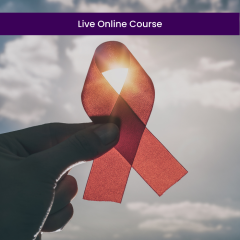Sexual Arrangements among Gay and Bisexual Men (1 CE)
Number of Credits: 1
This course is for: Clinical psychologists, school psychologists, counselors, nurses, and LMFTs.
Course By: Michael Parent, PhD
Content By: Starks, T. J., Robles, G., Bosco, S. C., Dellucci, T. V., Grov, C., & Parsons, J. T. (2019). The prevalence and correlates of sexual arrangements in a national cohort of HIV-negative gay and bisexual men in the United States. Archives of Sexual Behavior, 48, 369-382. doi: 10.1007/s10508-018-1282-8
Course Description: Gay and bisexual men who have sex with men accounted for 67% of new HIV infections in the US in 2015, and a primary relationship partner is a major vector for HIV infection. About half of gay and bisexual men who have sex with men have non-monogamous sexual arrangements. Sexual arrangements are agreements on the limitations and boundaries of sexual activity outside of a main relationship and are one way of managing HIV risk. A quantitative study of 1061 cisgender gay or bisexual men was conducted. About 45% of the men in the sample who were in relationships reported being monogamous. In the overall sample at the bivariate level, being single was associated with higher depression scores than being monogamous or open (that is, having sexual activity outside the main relationship). At the bivariate level, condomless anal sex with casual partners was lowest among men in monogamous relationships, compared to men who were single, monogamous, or monogamish. Use of alcohol was higher among individuals who were monogamish as compared to single, monogamous, or open. Use of drugs other than marijuana or alcohol was elevated among monogamish men living in non-urban areas. The authors conclude that having sexual arrangements in non-monogamous relationships modulates sexual behavior. Future research may include HIV-positive men and men in sero-discordant relationships and may explore the negotiation of specific sexual rules in sexual arrangements.
Learning Objectives:
- Evaluate the rates of HIV transmission among gay and bisexual men who have sex with men, and rates of primary relationship partners as vectors for HIV transmission
- Identify differences between the relationship groups in the study in regard to depression and substance use
- Identify differences between the relationships groups in rates of condomless anal sex with casual partners
Course Outline:
- Read and understand The prevalence and correlates of sexual arrangements in a national cohort of HIV-negative gay and bisexual men in the United States
- Review the Course Description and Learning Objectives
- Review the concept of sexual arrangements and differences between relationship groups in depression, substance use, and condomless anal sex with casual partners
- Complete the post-test questions. Recall that answers should be based on the referenced article
- Return to the referenced article for any missed questions and/or to understand sexual arrangements among gay and bisexual men who have sex with men, and associations with depression, substance use, and condomless anal sex with casual partners
Approvals:
| Board Approvals | American Psychological Association (APA), NBCC, Florida Board - Social Work, MFT, Counseling, and Psychology, NYSED - Social Work, MFT and Counseling Only, American Academy of Health Care Providers in the Addictive Disorders |
|---|---|
| CE Format | Online, Text-Based |







